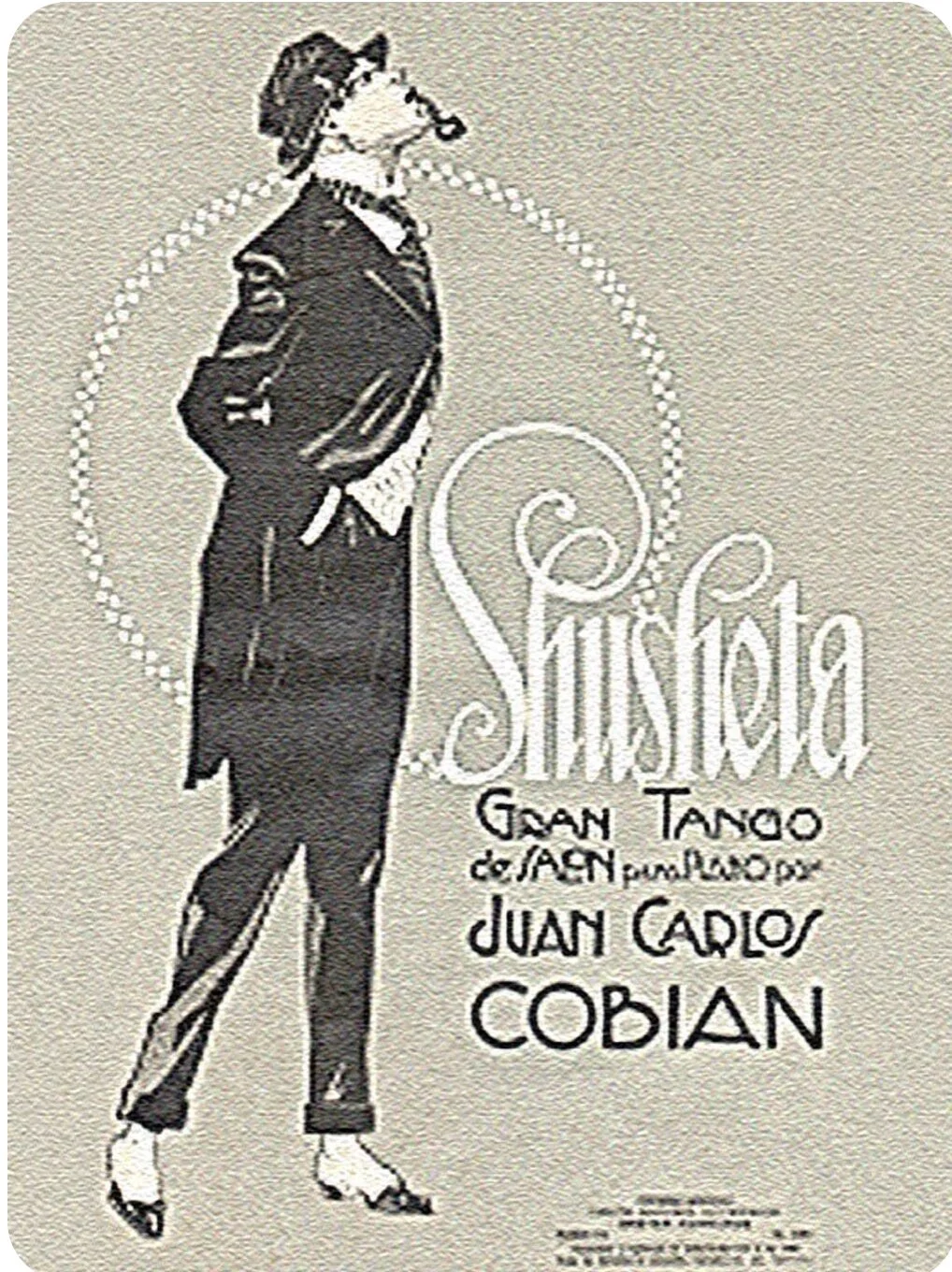Héctor Marcó had a knack for writing lyrics of touching sentiment, offering a refreshingly positive vision of romance. The songs almost defy the genre and break the conventions of the tango, except that they actually succeed so completely in their aims.
Viewing entries in
1940s
Homero Manzi brought to tango lyrics a certain genius for scene painting and portraiture, giving a realness of place and a sense of tender nostalgia to his songs. Among his greatest creations is this number, “Barrio de tango,” which evokes the old neighborhood of Pompeya…
By the early 1930s, outdoor gas lighting was already becoming a thing of the past. Electric power was rolling in to replace it, with its much brighter and safer illumination… and very often with a taller and less romantic design.
With lyrics by Enrique Cadícamo and music by the great singer Charlo—who wrote a handful of sophisticated tunes, including “Fueye” and “El viejo vals”—the song was not only a tango hit in the 1940s, but became popular throughout Latin America in a variety of other stylings.
Pascual Contursi had launched the tango on its narrative mission in 1916 with “Mi noche triste”… but by the advent of the 1940s the new generation was turning their focus inward to romantic themes. Foremost among these poets of intense longing was Pascual’s own son, José María Contursi.
The tango “Dime mi amor” might seem like the prototypical popular song. And that’s because, with its sentimental mood of hopeful simplicity, it was created to represent on stage precisely such a showtune, in the 1941 movie Yo quiero ser bataclana (I Want to Be a Showgirl), starring the great comic actress Niní Marshall.
Like some other lyrics of the 1940s penned by the great Enrique Cadícamo, these words for Juan Carlos Cobián’s tune “Shusheta” turn back to the characters, images, and themes of the early days of the tango, showing a tender irony along with a certain ambivalence.
The beautiful tango “Yuyo verde” offers a clear example of the highly emotional atmosphere Homero Expósito was able to conjure up with his impressionistic style of songwriting.
By the latter 1940s, tango had grown into the voice of the people in its own pictures, capable of sounding the depths of experience with almost no imagery at all, just a melody and a message of raw emotion. The song “Gracias” is one such example…
This week we turn to the famous tango “Tinta roja,” another highly impressionistic and nostalgic song, whose details evoke the old neighborhood life suffused in the inevitable sepia tones of the past.
Homero Expósito’s lyrics for the 1943 tango “Percal” offer a fine example of how tangos “talk to each other” across the decades. The impressionistic story in the song blossoms out of a single word—percale, the smooth cotton weave used for modest dresses in the early 1900s…
The romantic tango “Esta noche de luna” was among the biggest hits of 1943, overwhelming the charts with its infectious operatic melody and its pure expression of desire.
With its story of traveling to an abandoned house, and its imagery of snow and rose bushes, Horacio Sanguinetti’s lyric for the tango “Nada” evokes the scenery of Argentina’s interior…
This giant 1942 hit from the Ricardo Tanturi orchestra put charismatic singer Alberto Castillo front and center—and sometimes down in the audience, as his bellicose delivery of the opening lines would sometimes start a quarrel with members of the audience.
Written by José María Contursi, “Garras” (Claws) is the harrowing portrait of a forgotten lover, which makes an unusual shift of scenery as it changes from a cold night in the city to the haunting ambience of a folktale.
Lyricist Héctor Marcó was the frequent songwriting partner of Carlos Di Sarli, and wrote a long list of songs made famous by the maestro’s orchestra. Teaming up with bandoneonist Graciano Gómez, he produced this sentimental 1945 number “Tu íntimo secreto”—a follow-up to the same duo’s giant 1943 hit “Esta noche de luna.”
The highly cinematic lyrics of the 1944 tango “Llueve otra vez” dramatize the interior space of romantic regret, while using the weather poetically for atmosphere, metaphor, and musical texture. The song’s author Juan José Guichandut wrote only a few lyrics but a number of tango melodies.
“Malena” is the mythical portrait of a tango singer, swirling with legends and teeming with shadows. Were these evocative lines from the great Homero Manzi meant to immortalize a real woman who bared her soul in the spotlight on stage? Or do they weave a new myth out of the tango’s haunting ghosts?
The tango “Gricel” is a snapshot of a love affair which was to take over the life and career of José María Contursi, whose passion for the young Susana Gricel Viganó gave voice to many other tangos that share the imagery and longing of this one…
This 1942 hit from Lucio Demare and Homero Manzi (the duo behind “Malena”) evokes the ports of Buenos Aires, and Dock Sud in particular, where the Riachuelo flows down banks that in former days were lined with the city’s slaughterhouses.



















